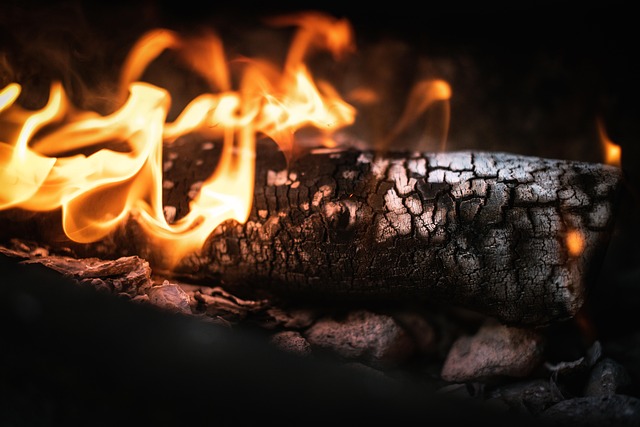Smoke damage from wildfires and cooking fires in Texas homes and buildings poses significant health risks through toxic compounds and particulate matter release, emphasizing the importance of understanding and mitigating indoor air quality (IAQ) impacts. After a fire event, thorough indoor air testing using specialized equipment is crucial to identify hazards. Certified IAQ specialists assess affected areas, collect samples, and analyze them in labs for volatile organic compounds (VOCs), particulate matter, and other dangerous substances. Based on test results, personalized restoration plans are developed, which may include targeted cleaning, material replacement, or advanced filtration systems. Continuous monitoring ensures Texas spaces meet safety standards, fostering healthier environments throughout the recovery process.
“In Texas, understanding smoke damage and its profound impact on indoor air quality is paramount for both homeowners and businesses. This comprehensive guide delves into the intricacies of smoke damage assessment and offers insights into effective testing methods for residential and commercial properties post-disaster.
From recognizing the signs of smoke intrusion to implementing best practices for recovery, this article equips readers with essential knowledge to mitigate smoke damage and restore Texas homes and businesses to their pristine state.”
- Understanding Smoke Damage and Its Impact on Indoor Air Quality in Texas
- The Process of Indoor Air Testing for Smoke Damage in Residential and Commercial Spaces
- Post-Disaster Recovery: Best Practices for Mitigating Smoke Damage and Restoring Indoor Air Quality in Texas Homes and Businesses
Understanding Smoke Damage and Its Impact on Indoor Air Quality in Texas

Smoke damage from fires can have severe consequences for indoor air quality in Texas homes and buildings. When a structure experiences smoke intrusion, various toxic compounds and particulate matter are released, posing significant health risks to occupants. These include irritants like carbon monoxide, volatile organic compounds (VOCs), and fine particles that can penetrate deep into the respiratory system.
In Texas, where homes and businesses may be prone to wildfires or residential cooking fires, understanding smoke damage is crucial. Prompt indoor air testing after a fire event is essential to assess the extent of contamination. Professionals use specialized equipment to measure levels of smoke-related pollutants, ensuring that any potential hazards are identified and mitigated to maintain healthy living environments for Texas residents.
The Process of Indoor Air Testing for Smoke Damage in Residential and Commercial Spaces

In the aftermath of smoke damage, indoor air testing is crucial for ensuring safe and healthy living or working environments in Texas. The process typically involves several key steps. First, professionals carefully inspect the affected areas to identify sources of contamination and assess the extent of the damage. This includes examining walls, ceilings, floors, and other surfaces for residue or discoloration indicative of smoke or soot. Once the scope is established, experts collect samples from various locations inside and outside the property using specialized equipment. These samples are then analyzed in certified laboratories to determine the presence and concentration of volatile organic compounds (VOCs), particulate matter, and other hazardous substances associated with smoke damage.
The results of these analyses guide remediation efforts. If elevated levels of contaminants are found, targeted cleaning or replacement of affected materials may be recommended. In severe cases, decontamination measures such as air filtration systems or odor removal treatments could be required to restore indoor air quality. Throughout the process, professionals document each step and maintain records for transparency and future reference. This meticulous approach ensures that indoor spaces in Texas meet safety standards and provide a comfortable, healthy environment for occupants after smoke damage has occurred.
Post-Disaster Recovery: Best Practices for Mitigating Smoke Damage and Restoring Indoor Air Quality in Texas Homes and Businesses

After a disaster, such as a fire, it’s crucial to follow best practices for smoke damage indoor air testing and mitigation in Texas homes and businesses. The first step is conducting thorough assessments to identify the extent of contamination from toxic compounds like carbon monoxide and volatile organic compounds (VOCs). Professional IAQ specialists in Texas should sample air quality in various areas, focusing on zones with visible smoke damage or odours.
Once assessment is complete, a tailored plan for restoration can begin. This may involve removing contaminated materials like insulation, drywall, and furniture, along with implementing strategies to scrub the air of pollutants using advanced filtration systems and negative pressure techniques. Regular monitoring throughout the recovery process ensures that indoor air quality meets safe standards, providing a healthier environment for Texas residents and businesses post-disaster.
Smoke damage can significantly impair indoor air quality in Texas homes and businesses, but proper testing and mitigation practices are key to restoring a safe, healthy environment. By understanding the impact of smoke on air quality and implementing effective recovery strategies, residents and professionals can ensure the well-being of those affected by disasters and fire events. In Texas, where natural disasters are prevalent, prompt action and knowledge of indoor air testing protocols are essential for a successful post-disaster recovery process.
